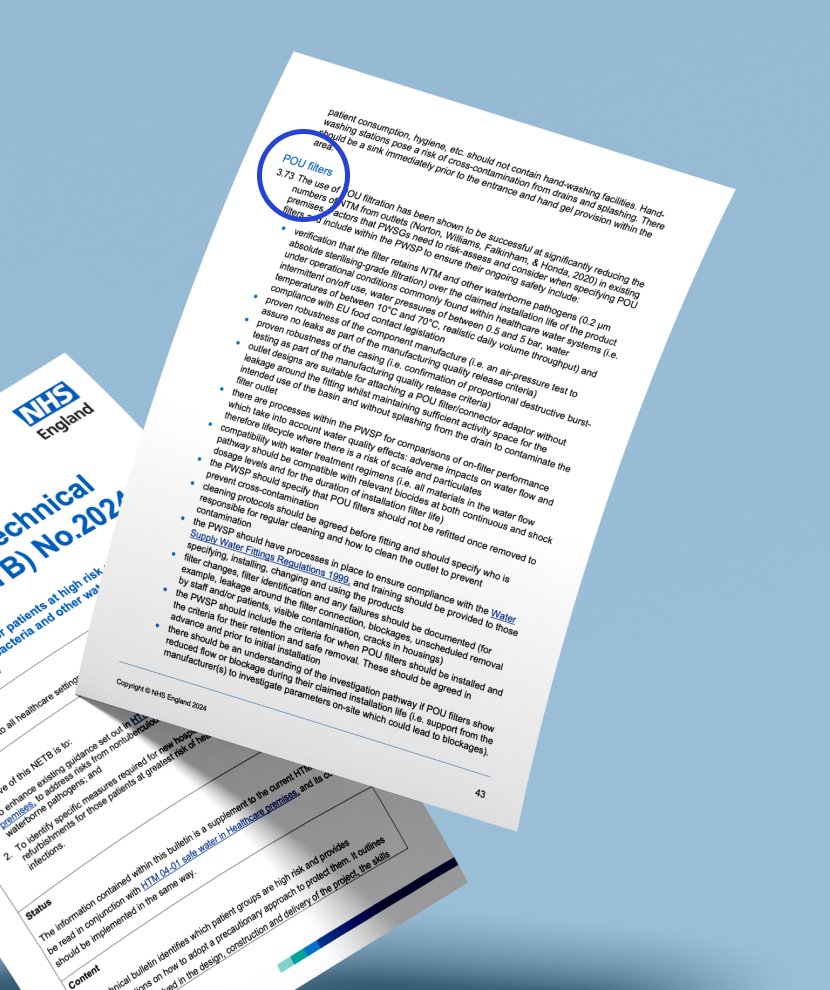What Does NETB 2024/03 Say About POU Filters?
Section 3.73 of NETB 2024/03 provides clear expectations on the use of point-of-use filters in healthcare estates. The guidance states that when water is considered safe to use in high-risk areas, such as for drinking or hygiene purposes (bathing, showering, and handwashing) in patient recovery pathways, it must be filtered through sterilising grade point-of-use filters. These filters should meet defined technical and regulatory criteria to ensure continuous patient protection against waterborne pathogens like Pseudomonas aeruginosa, Legionella, and NTM.





